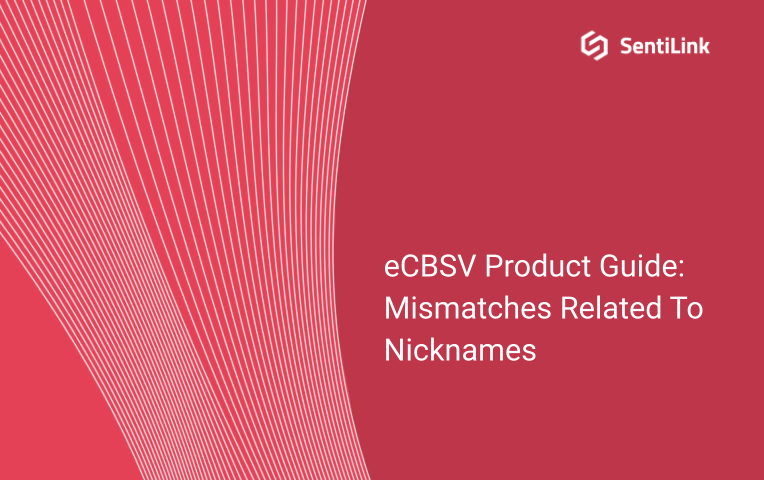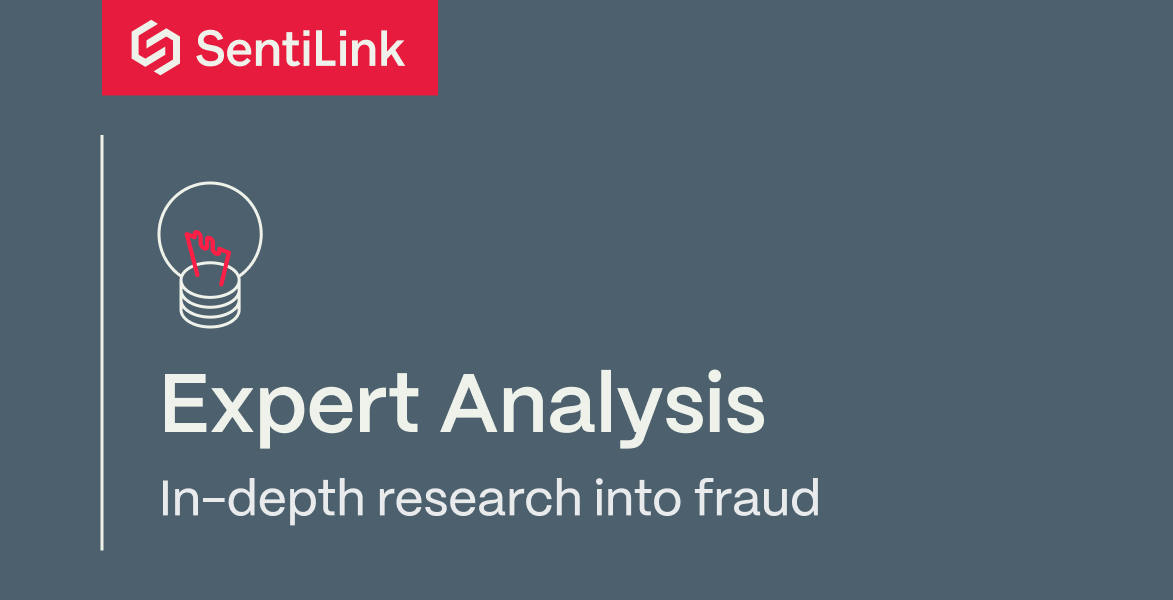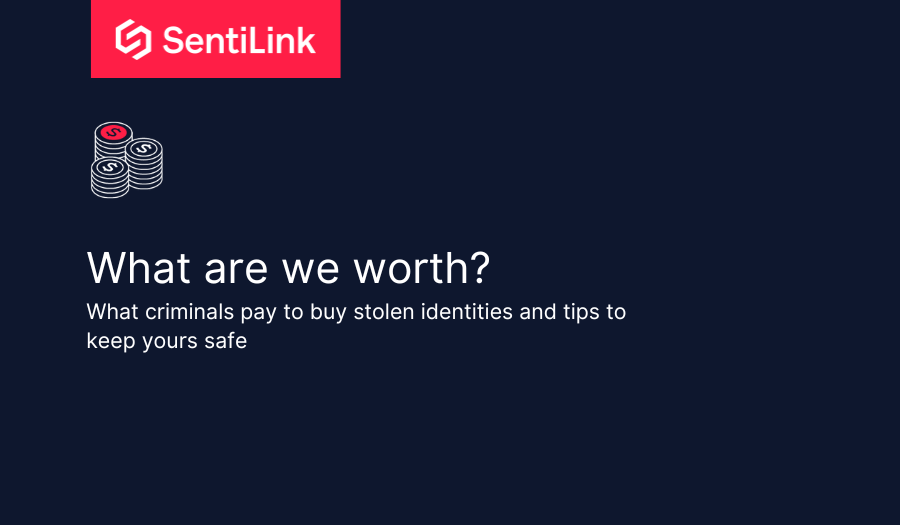Blog post
The eCBSV Product Guide: Mismatches Related To Nicknames
SentiLink
Published
September 8, 2020

In September 2019, SentiLink was selected by the Social Security Administration (SSA) to participate in its eCBSV pilot, an automated service that allows permitted entities to validate name, DOB, and SSN combinations against the Numident, the SSA’s database of record for eCBSV. In July 2020, we became the first company to go live with the program. This blog post is the fifth in a series of eCBSV-content, and will provide additional background on a broader white paper that we distributed in June.
Almost every culture uses comfortable and familiar nicknames as opposed to our more formal names given at or near birth. The origin of the word nickname is “eke names” which comes from the Middle English word eke, meaning “also” or “in addition,” and name to form ekename — literally, “also-name.” How did we get “nickname” from “ekename”? This is an example of metanalysis, or the changing of the division of words based upon how they sound together. In this case, “an ekename” became “a nekename” and ultimately, today, “a nickname.” Other examples of metanalysis include “uncle”, “umpire,” and “newt”.
A lack of understanding of how common nicknames will be matched in the eCBSV pilot can lead financial institutions to believe a legitimate applicant is potentially a synthetic fraudster, contribute to a high mismatch rate, and create additional friction for the consumer in what should be an almost instant process.
We know that the SSA will not be using a nickname table, and it is unclear whether they will deploy any other forms of fuzzy matching logic. In lieu of further guidance from the SSA, understanding consumers’ use of nicknames on applications will better inform eCBSV “no match” responses and eCBSV implementation overall.
Who’s on the Most Popular List?
To understand what percent of mismatch rates may be caused by nicknames, we conducted a few analyses. Our first was a quick study of the most popular male and female names used to apply for a SSN during the 1980s, which would be one of the most credit active populations today. Because of their enumeration programs, the SSA is best suited to report on names in the US and has provided a “Most Popular Names” list every year and decade since the 1880s.
If you were a child of the 80’s, you likely went to school with a lot of Jessica’s, Jennifer’s, Michael’s, and Christopher’s. Do you remember calling them Jennie or Mike? Or did you call them by their full more formal names? Of the top 50 male names from the 1980’s, 58% can be shortened to a nickname which equates to 68% of the births in that cohort. Female names in the 80’s didn’t appear to be as informal; only 52% of the names, accounting for 56% of the cohort, could be shortened. If these specific populations used their shortened nicknames on credit applications and eCBSV services, we’d see no hit rates of upwards of 50%. Fortunately, many of us weave between formal and informal versions of our names depending upon how they are being used, so we don’t anticipate rates being nearly that high.
Empirical Analysis Using Prior Applications
For further analysis, we turned again to the applications that SentiLink has scored for synthetic fraud. We took all applications scored over the last two years and matched the name, DOB, and SSN against a well-known national database of consumer records using an exact/hard match as well as a fuzzy match with a nickname table.
Our analysis suggests that 1.5% of applications from legitimate consumers will be returned as a mismatch in the eCBSV process due to the consumer’s use of their using a nickname rather than their legal name. We believe the actual mismatch rate might even be higher, since our data suggests that consumers who shorten their names do so consistently when applying for credit. For our analysis, a consumer with the legal first name “Michael” who consistently uses the name “Mike” would show up as a match based on our logic, but a mismatch against the SSA’s Numident.
Additionally, we split out mismatches due to name variations and honed in on names that are not traditional English names. We estimate that 1.5% of applications would mismatch due to the consumer’s use of a different version of their name. Examples of this might be the shortening of a longer name, or different spellings or anglicizations of a name.
A third flavor of name variations would be “alternative names.” This might be a consumer whose first name is “John” and whose middle name is “Thomas,” but they frequently use their middle name “Thomas” on applications to financial institutions. We estimate that this type of mismatch will affect 0.6% of applications.
What Does This Mean for eCBSV Participants?
Because of usage of nicknames, the industry needs to pay special attention to mismatches. Inaccurate mismatches in the eCBSV pilot can lead to potential consumer frustration and lower customer conversion. As an industry, we should treat each applicant as if they might be that 1 in 50 who might be impacted by this type of false mismatch and help them understand the value of the eCBSV program as well as how to correct their Numident record.
Each of us should have processes in place to direct consumers to their local field office if they feel they are being wrongly identified as a potential synthetic fraud. Additionally, consumers can request a copy of their information in the Numident by sending an application and $22 to the SSA, or by setting up an account at SSA’s my Social Security account online.
There are other error types that will need further explanation or remediation. These additional error types are discussed in the broader white paper, which we developed with our eCBSV partners and their consumers in mind.
Download our broader eCBSV white paper and we’ll invite you to a video conference call SentiLink will be hosting in mid-to-late September where we will be reviewing our findings from the first days of processing eCBSV.
Related Content

Blog article
April 3, 2024
Tips from a Fraud Fighter for Spotting Assumed Identity Abuse
Read article
Blog article
February 29, 2024
Reducing Complexity in Model Risk Management with Attributes
Read article
Blog article
January 18, 2024